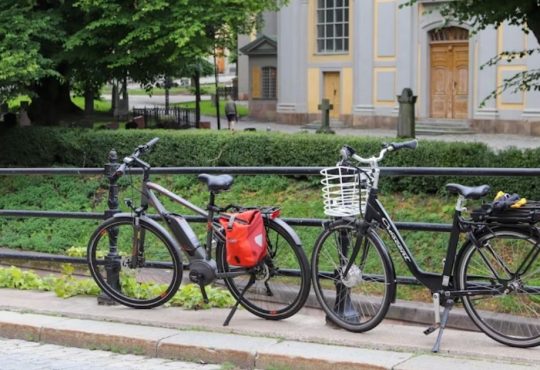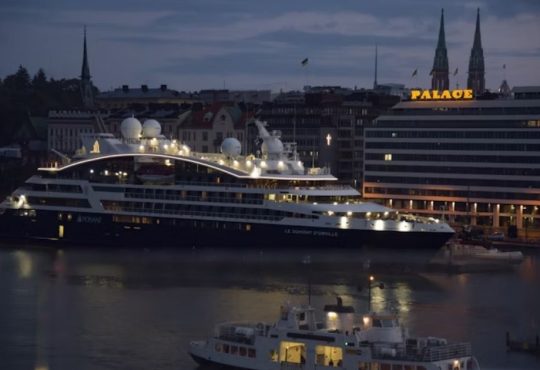As remote work becomes a lasting force in the global workforce, a new generation of cities for digital nomads is stepping into the spotlight. These aren’t just places with solid Wi-Fi and café culture—they’re hubs of creativity, affordability, and cultural richness. In 2025, digital nomads are choosing destinations that offer more than pretty beaches—they’re seeking places that support intentional living, from easy visa options to vibrant communities and a high quality of life.
Whether you’re building a startup, managing remote teams, or freelancing from your backpack, these top cities for digital nomads are worth putting on your radar. They combine cost-savvy living with world-class coworking, diverse experiences, and the chance to truly feel at home abroad. Ready to work from anywhere—without draining your savings? These smart city picks show you how to do just that.
6 Best Cities for Digital Nomads to Thrive in 2025
1. Tbilisi, Georgia — Europe’s Quiet Tech Darling
Why It’s Trending:
Tbilisi is fast becoming one of Europe’s best-kept secrets for digital nomads, though probably not for long. Nestled between Europe and Asia, this Georgian capital balances cobblestone streets, centuries-old churches, and hilltop fortresses with a booming tech and startup scene. It’s a city where vintage wine cellars sit next to art galleries, and Soviet-era architecture meets neon-lit coworking hubs. The Remotely from Georgia visa allows remote workers from over 90 countries to live and work here for up to a year without hassle, making it ideal for long-term stays.
Tbilisi’s cultural magnetism and affordability have attracted a vibrant, growing community of freelancers, developers, designers, and entrepreneurs. Internet speeds are reliable, English is widely spoken among younger locals, and the café scene rivals much bigger cities, with laptop-friendly spots offering specialty coffee and strong Wi-Fi for under $2 a cup. From the wine-soaked streets of Old Town to the edgy Fabrika district, Tbilisi inspires every corner without breaking the bank.
How to Afford It:
- Affordable Housing: Stylish, centrally located one-bedroom apartments average around $400/month. They are often fully furnished and have charming balconies or loft layouts.
- Walkability & Transit: The compact city layout and efficient metro system eliminate the need for a car. Most nomads walk or take public transit, with metro rides costing less than $0.50.
- Low-Cost Living: Save money by shopping at open-air markets like Dezerter Bazaar or Navtlughi Market, where fresh herbs, vegetables, and homemade cheeses cost a fraction of Western prices. Dining out is also wallet-friendly, with traditional khachapuri (cheese-filled bread) and khinkali (dumplings) often costing under $1 each.
- Bonus: For mountain lovers, weekend getaways to Kazbegi or the wine region of Kakheti are just a few hours away—proof that adventure and affordability go hand in hand in Tbilisi.
2. Medellín, Colombia — Latin America’s Digital Comeback
Why It’s Trending:
Medellín is no longer just a comeback story—it’s a blueprint for urban transformation. Once marked by conflict, this Colombian city has blossomed into a progressive, innovation-led hub attracting digital nomads from around the globe. With its year-round “eternal spring” climate, scenic mountain views, and dynamic urban planning, Medellín quickly becomes one of Latin America’s most livable cities for remote workers.
The city’s shift into a tech-forward destination has brought an explosion of coworking spaces, from the sleek Selina Cowork Medellín to local favorite La Casa Redonda—each buzzing with startups, freelancers, and remote teams. Strong Wi-Fi, affordable costs, and youthful, creative energy give Medellín its edge. Add to that a metro cable system that floats above lush hillsides, vibrant street art, and a thriving expat community centered around neighborhoods like El Poblado and Laureles, and it’s easy to see why Medellín is reclaiming the spotlight.
How to Afford It:
- Coliving Spaces: Nomad-friendly coliving options start at $300/month, often including perks like cleaning services, communal kitchens, and community events that make settling in easy.
- Long-Stay Airbnb Discounts: Many apartments offer steep discounts on monthly rates, especially if booked for 28 days or more, ideal for slow travelers.
- Affordable Eats: Dining out is part of daily life here without guilt. Grab a traditional menu del día (set lunch) with soup, entrée, juice, and dessert for under $5. Local street food like arepas con queso or empanadas offers a flavorful snack for less than a dollar.
- Transport Savings: The integrated Metro and Metrocable system costs less than $1 per ride, making it easy to explore the city affordably.
Bonus: Medellín’s vibrant cultural scene—complete with salsa nights, language exchanges, and weekend hikes to coffee farms—means there’s always something to do without a big budget. In this rising Latin American gem, lifestyle meets value in all the right ways.
3. Chiang Mai, Thailand — The Pioneer City Making a Bold Comeback
Why It’s Trending:
Chiang Mai isn’t new to the digital nomad scene, but in 2025, it’s experiencing a well-deserved revival. Once the unofficial capital of the remote work movement in Southeast Asia, Chiang Mai is leveling up with fresh infrastructure upgrades, sleek new coworking spaces, and generous Long-Term Resident Visa programs that make settling in easier than ever. Despite its popularity, the city has retained its laid-back charm and affordability, attracting everyone from seasoned freelancers to first-time remote workers.
Misty mountains and ancient temples surround Chiang Mai and offer a rare mix of spiritual serenity and entrepreneurial energy. The Nimmanhaemin district, formerly a modest artistic corridor, has transformed into a thriving hub for digital nomads, now characterized by creative studios, niche cafés, and collaborative coliving environments. With high-speed internet, affordable wellness options like Thai massage and yoga, and a culinary scene that mixes street food with vegan innovation, Chiang Mai provides a quality of life that punches far above its price point.
How to Afford It:
- Housing: Comfortable, fully furnished studio apartments are available for as low as $250/month, especially in neighborhoods just outside the city center, like Santitham or Chang Phueak.
- Transportation: Scooter rentals cost around $50–$60/month, making it easy to zip around the city and explore surrounding waterfalls, temples, and cafés.
- Connectivity: Local telecom providers like AIS and DTAC offer affordable prepaid SIMs with generous data plans, while fiber internet in apartments or coworking hubs is fast and reliable.
- Daily Living: Delicious street food—pad kra pao, khao soi, or mango sticky rice—can be found for under $2, and even trendy cafés rarely charge more than $3 per latte.
- Bonus: With a calendar full of lantern festivals, craft fairs, night bazaars, and meditation retreats, Chiang Mai makes it easy to work hard, live well, and find balance—all without draining a bank account.
4. Lisbon, Portugal — The Mediterranean Tech Magnet
Why It’s Trending:
Lisbon continues to shine as one of Europe’s most dynamic digital nomad hubs. With its sunny coastline, pastel-hued buildings, and mosaic-paved streets, the city offers more than just postcard charm—it’s a growing epicenter for startups, creatives, and global freelancers. Portugal’s progressive attitude toward remote work has solidified its place on the digital map, especially with initiatives like the Digital Nomad Village in Madeira and visa options like the D7 Passive Income Visa and Digital Nomad Visa, which cater directly to location-independent professionals.
Lisbon’s appeal lies in its contrast: historic tram-lined hills meet buzzing coworking lofts, and centuries-old architecture blends seamlessly with fiber-speed internet. Neighborhoods like Bairro Alto and Cais do Sodré brim with rooftop bars, while places like LX Factory—a creative complex in a converted warehouse—buzz with innovation and collaborative energy. English is widely spoken, and the local culture is welcoming, making social and professional networking easier. Add in golden beaches a short train ride away, mild winters, and year-round festivals, and it’s no surprise that Lisbon is topping digital nomad wishlists in 2025.
How to Afford It:
- Shared Housing: Rental prices in central Lisbon can be steep, especially after the rebound in tourism. Many nomads team up in shared apartments or join international co-living spaces to cut costs, with rates around €400–€600 per person, depending on the area.
- Neighborhood Know-How: While trendy spots like Alfama or Príncipe Real come with premium price tags, areas like Graça, Campo de Ourique, and across the river in Almada offer more space and lower rent, often just a 10–15 minute ferry or tram ride away.
- Local Perks: Embrace Lisbon’s affordable luxuries: espressos for under €1, pastel de nata for €0.80, and fresh seafood lunches from local taverns for €8–€10. Free museum days and the city’s public bike program (GIRA) make exploring easy without spending much.
- Coworking on a Budget: Hot desks in stylish coworking hubs like Second Home or Impact Hub start at around €15/day, with weekly or monthly pass discounts.
Bonus: For longer stays, explore options like NHR tax benefits, which can make living in Portugal even more financially attractive for remote professionals. With proper planning, Lisbon offers vibrant city life, calm beaches, and entrepreneurial opportunities, making it one of Europe’s top destinations for living, working, and thriving remotely.
5. Kuala Lumpur, Malaysia — The Underrated Gem
Why It’s Trending:
Kuala Lumpur is finally getting its moment in the digital nomad spotlight. As one of Asia’s most livable cities, it blends futuristic skyscrapers with colonial-era charm, thriving street food scenes, and sprawling parks, all wrapped in a warm, multicultural atmosphere. English is widely spoken, internet speeds are strong, and the city’s affordability is a significant draw for long-term remote workers. KL is also a strategic launchpad for exploring the rest of Southeast Asia, with low-cost flights to Bangkok, Bali, Singapore, and Hanoi in under four hours.
Beyond the skyline of the Petronas Towers lies a city rich in contrasts: luxury malls coexist with street markets, and trendy coworking spaces sit beside age-old temples. The startup ecosystem here is growing fast, boosted by government-backed digital initiatives and Malaysia’s push to become a regional tech hub. Coworking spaces like Common Ground and WORQ offer professional settings, while cafés in Bangsar and Mont Kiara are unofficial nomad favorites.
How to Afford It:
- Budget Housing: Fully furnished one-bedroom apartments in central districts like Bukit Bintang or Brickfields can be found for under $400/month, often in buildings with pools, gyms, and security.
- Transport Efficiency: Kuala Lumpur’s MRT and LRT train systems are clean, reliable, and budget-friendly, with rides costing around $0.50–$1. E-hailing apps like Grab also offer cheap fares across the city.
- Incredible Cuisine, Low Cost: KL’s hawker centers and night markets serve everything from nasi lemak to Indian thali and Chinese dim sum for $2–$4 per meal. Cooking at home is affordable, but with good (and cheap) food, many eat out daily.
- Coworking & Connectivity: Internet speeds average 100 Mbps, and monthly coworking memberships start at around $50–$70, depending on the location.
Bonus: KL’s proximity to rainforests, highlands, and islands makes weekend getaways a breeze. From hiking in Cameron Highlands to lounging in Langkawi, Malaysia offers an unbeatable mix of value and variety.
6. Split, Croatia — Coastal Calm with Startup Energy
Why It’s Trending:
With Croatia’s entry into the Schengen Zone and its launch of the Digital Nomad Visa, cities like Split are gaining serious traction among remote workers. Nestled along the Adriatic Sea, Split offers the scenery most people dream about—crystal-clear waters, Roman ruins, and terracotta rooftops—but with a growing ecosystem of coworking spaces, tech events, and nomad-friendly cafés. Unlike its more touristy counterpart, Dubrovnik, Split delivers a quieter, more livable pace perfect for extended stays.
Historic yet vibrant, Split combines a coastal resort’s feel with a startup town’s pulse. Walkable streets, laid-back locals, and outdoor markets give it a small-town charm, while coworking spaces like Saltwater Nomads make it easy to plug into a digital community. Plus, with ferries and buses connecting the Dalmatian coast, island-hopping or weekend escapes to places like Hvar or Brač are always within reach.
How to Afford It:
- Seasonal Savings: During the off-season (October–April), prices for short-term rentals drop significantly. One-bedroom apartments that cost €800 in summer can go for €400–€500 in cooler months.
- Fresh and Frugal: Local markets like Pazar Market offer seasonal produce, fish, cheese, and olive oil at bargain prices, making home cooking affordable and enjoyable.
- Cheap Exploration: Intercity travel is budget-friendly thanks to reliable buses and ferries, allowing exploration of Croatia’s scenic coast and islands for a fraction of the cost of Western Europe.
- Community Connections: Join local Facebook groups or nomad meetups to find house shares, events, and insider tips—Split’s network is small but welcoming.
Bonus: With a Mediterranean lifestyle that includes outdoor cafés, daily swims, and sun-soaked strolls through Diocletian’s Palace, Split offers the serenity of a coastal town with just enough digital buzz to keep the workflow alive.
Bonus Tips: How to Afford the Digital Nomad Life Anywhere
- Prioritize Remote-Compatible Opportunities: Stable employment can be found through platforms such as Toptal, We Work Remotely, and FlexJobs, which specialize in remote job listings across industries.
- Diversify Revenue Sources: Income may be generated through freelancing, online language instruction, consulting, or digital product sales.
- Optimize Credit Card Usage: Select travel-oriented credit cards with no foreign transaction fees and robust rewards or points programs.
- Embrace Slow Travel: Reducing the frequency of relocations can significantly cut expenses. Extended stays often yield better rental rates and deeper local integration.
- Utilize Cost-of-Living Resources: Budgeting accuracy improves through real-time data from tools like Numbeo and Nomad List, which provide insights on global living expenses.
The Digital Nomad Way in 2025
In 2025, digital nomad life is less about escape and more about intentional living. The cities leading the charge blend affordability, connectivity, and cultural richness, and with smart budgeting, the lifestyle is more accessible than ever. Pack light, plan well, and let the world become your workspace.





